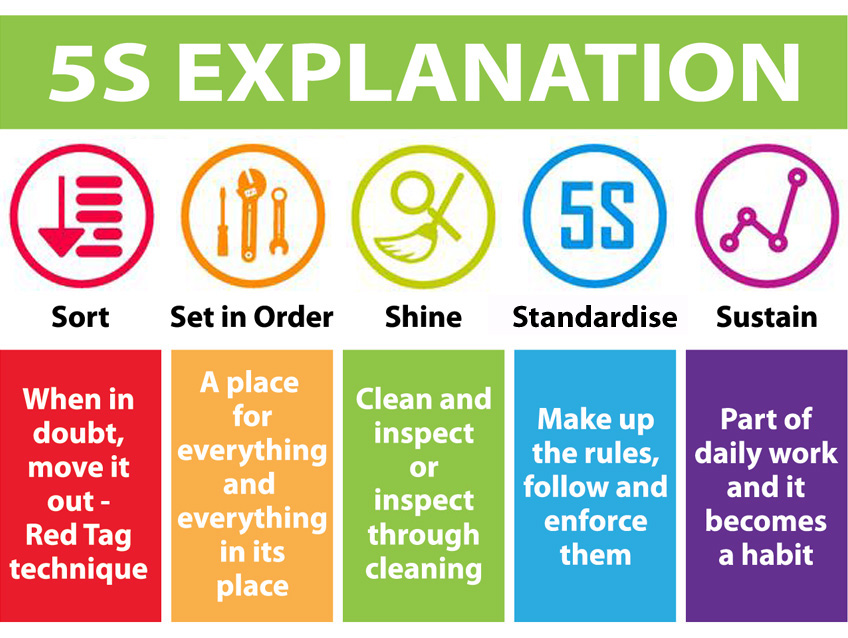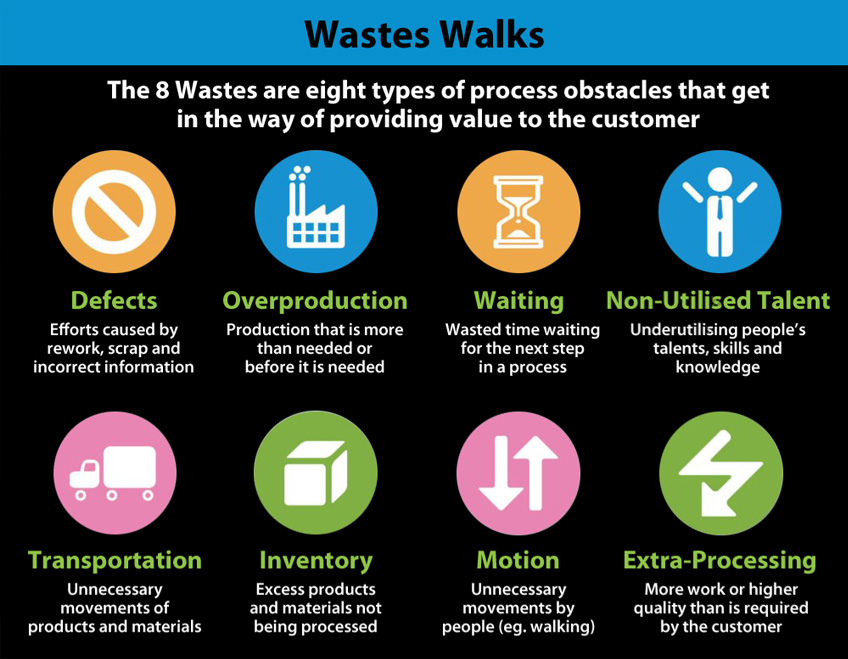Lean & Agile Construction view 5S as probably the most valuable tool that can be applied in construction. Creating a climate of having a clean, tidy, and organised worksite is a critical foundation for safety, quality, planning, and cost control on any project. Lean & Agile Construction have extensive experience in training teams in implementing 5S in construction.
5S is primarily used around construction sites to help manage and organise the site in a safe and orderly manner. The 5S’s stand for; Sort, Set in Order, Shine, Standardise and Sustain. 5S provides a measurable format for implementing, monitoring and improving site cleanliness and organisation. Key to the success of 5S is that the principles are applied across the entire site, not just in one work area. The use of visual indicators in each area showing how the area should look is vital in ensuring the success of the program.

Sort: Only store equipment, paper, materials etc. that you actually need to do your job that day in a work area. Anything that is not required should be removed from the work area.
Set in Order: Used to organise the work place more efficiently. The items you need most frequently are stored close to the place of work. Less frequently used items can be kept away from the work place until required. Storage areas for equipment, materials or tools should be visually indicated. This can also play a key role in minimising inventory on site as you can limit the storage space available using simple space constraints.
Shine: The ongoing effort to keep the work place tidy and clean. This applies to offices, canteens, storage areas and equipment as well as construction areas.
Standardise : Once a high standard of order has been attained, the team should use pictures and posters to ensure that everyone is aware how the area should look
Sustain: Sustain involves performing regular audits of the work areas and calculating 5S scores that are displayed on site. Each work area should have a 5S representative who is responsible for ensuring that workers in an area are continually trying to improve the 5S score. Consideration should be given to a reward system for the area that attains a certain standard.
Right First Time
Key to the implementation of Lean Project Delivery is the concept of Right First Time (RFT). As previously mentioned, a project can be viewed as a network of commitments. These are commitments to execute and complete tasks according to an agreed level of quality and an agreed schedule. Defects which result in rework or delays are wasteful and efforts should be made to minimise their occurrence.Right First Time requires each contractor to check their own work to confirm that it has been completed to the required quality level before they confirm it has been completed on the weekly work schedule.
Waste Walks
Waste Walks are a tool used to aid the ongoing minimisation and elimination of Waste in all its forms from the workplace. A Waste Walk requires managers from each discipline to spend time on a weekly basis walking around the site with the aim of identifying and recording waste and then developing plans to reduce or eliminate each waste.

A weekly waste walk involving members of the construction team, contractor and client representatives will be held on the site. A schedule should be established so that a different area will be covered during each walk. Areas to be covered will include the office/portacabin area, material and waste storage, construction areas and car parking. During the walk the team look for evidence of waste as outlined above and record the waste using photographs and notes.